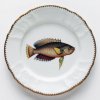Pruittx2
Been around a bit
My SnoWay will rise up on it's own as you push into a pile,, I have made 7-8' high piles, in the McD's lot I plow,, I also have the Down Pressure feature, that will push the blade down hydraulically and relieve all the weight on the front suspension there by scraping the plowed surface cleaner then just the weight of the plow itself. No problems here. 




